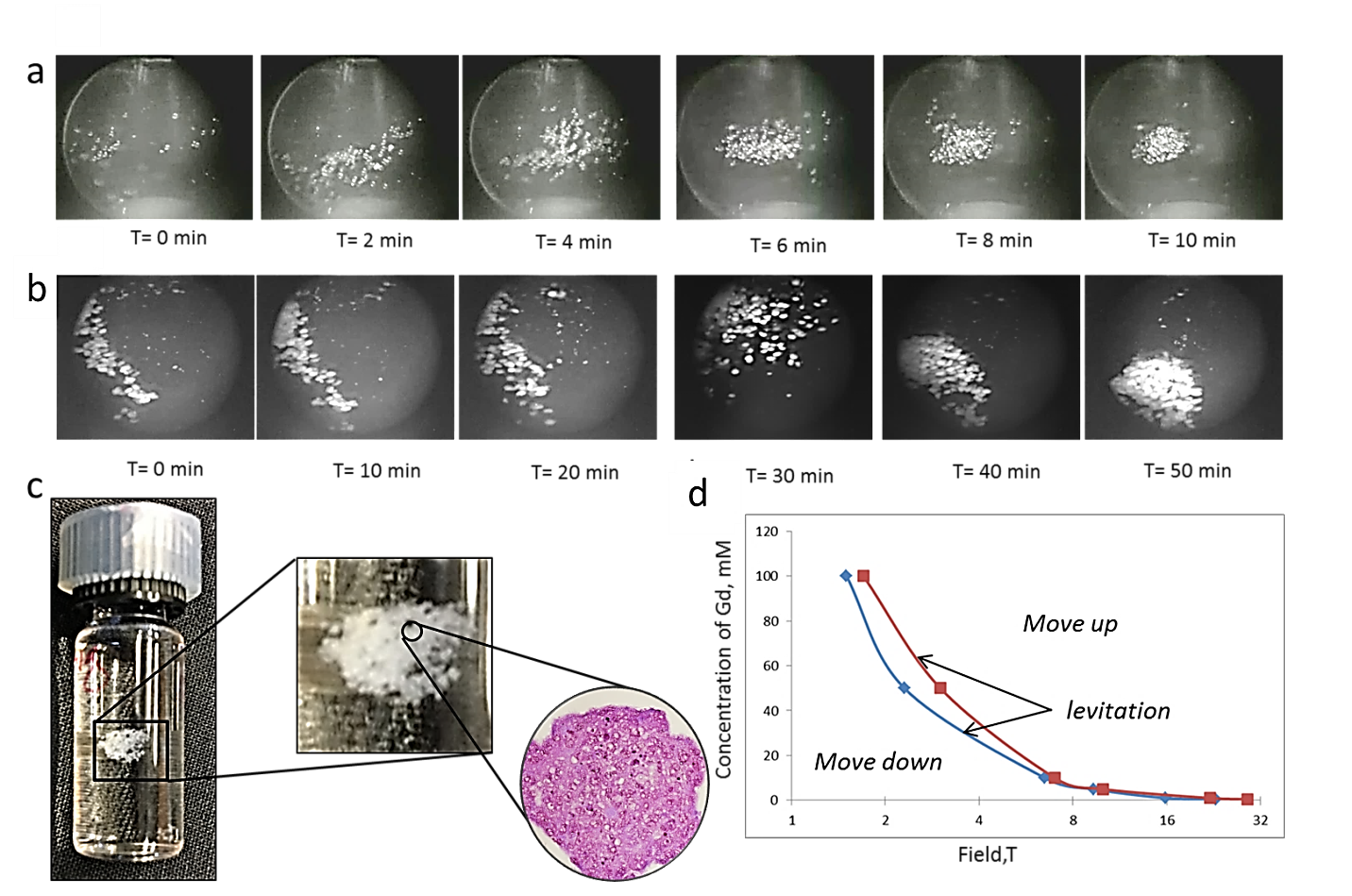Hans Engelkamp and Peter Christianen, HFML Nijmegen.
This research shows that magnetic levitational bioassembly with a non-toxic, low concentration of a paramagnetic medium in high magnetic field is technologically feasible. Moreover, the experimental results confirm that it can be used as a cost-effective alternative to microgravity research at the International Space Station ISS.
For the experiments, a gadolinium(III)-chelate contrast agent was selected, which is known to have the lowest possible toxicity. However, at high concentrations, it is still potentially toxic for cells and tissue spheroids, because of the osmotic pressure imbalance due to excessive use of ions in the paramagnetic medium. An obvious dilemma – high concentration of gadolinium enables magnetic levitation but is relatively toxic, whereas a low, non-toxic concentration of gadolinium does not allow magnetic levitation with permanent magnets. The solution is to perform the levitation at a low concentration of gadolinium but taking advantage of very high magnetic fields.
Using a magnetic field of up to 31 T, researchers from Moscow, Maastricht, and Nijmegen performed magnetic levitational assembly of tissue constructs from living spheroids. The construct from tissue spheroids partially fused after 3 hours of levitation. The analysis of viability after prolonged exposure to the magnetic field showed the absence of significant cytotoxicity or morphology changes in the tissue spheroids. This means that the high magnetic field acts as a non-toxic, temporal, and removable support. The researchers demonstrate that formative biofabrication of tissue-engineered constructs from tissue spheroids in high magnetic fields is a promising research direction.

Figure: Construct assembly under high magnetic field levitation. a) Polystyrene beads assembling at 0.5 mM gadobutrol and in a magnetic field of 22 Т. b) Tissue spheroids assembling until a stable construct was obtained at 0.8 mM gadobutrol and a magnetic field of 19 Т. c) Construct assembled after 3 hours at 19 Т (insert circle shows a histological section of the construct). d) Curves of levitation conditions depending on the gadobutrol concentration and magnetic field applied for tissue spheroids (red curve) and polystyrene beads (blue curve).
Scaffold-free and label-free biofabrication
technology using levitational assembly in
high magnetic field, V. A. Parfenov, V. A. Mironov,
K. A. van Kampen, P. A. Karalkin, E. V. Koudan , F. DAS Pereira,
S. V. Petrov, E. K. Nezhurina, O. F. Petrov, M. I. Myasnikov,
F. X. Walboomers, H. Engelkamp, P. Christianen,
Y. D. Khesuani, L. Moroni, and C. Mota, Biofabrication (2020).
DOI: https://iopscience.iop.org/article/10.1088/1758-5090/ab7554
Contact: hans.engelkamp@ru.nl






